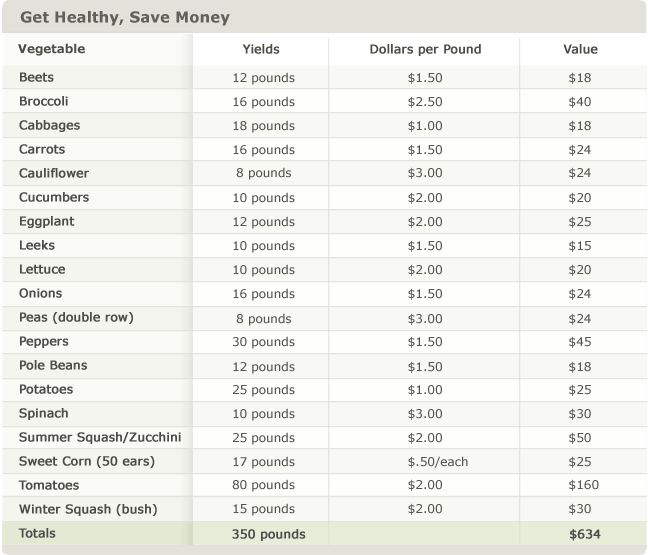By: National Gardening Association
When economic times are hard, people head to the garden. It happened in the early 20th century with Liberty Gardens, in the 1940s with Victory Gardens, and in the 1970s with the back to the land movement. Similarly, with current concerns about food safety, global warming, carbon footprints, and pollution, along with a desire to build a link to the Earth and our own neighborhoods, food gardening has become a simple and tasty solution.
Improve your health
We all know we’re supposed to eat more fruits and vegetables every day. It isn’t just good advice from mom. Many vegetables are loaded with vitamins A and C, fiber, water, and minerals such as potassium. A growing body of research shows that eating fresh fruits and vegetables not only gives your body the nutrients and vitamins it needs to function properly, but it also reveals that many fruits and vegetables are loaded with phytochemicals and antioxidants — specific compounds that help prevent and fight illness.
While specific vegetables and fruits are high in certain nutrients, the best way to make sure you get a good range of these compounds in your diet is to “eat a rainbow.” By eating a variety of different-colored vegetables and fruits, you get all the nutrients you need to be healthy. Eating fruits and vegetables is generally a great idea, but the quality and safety of produce in grocery stores has been increasingly compromised. Whether it’s Salmonella on jalapeño peppers or E. coliin spinach, warnings seem to be happening every year. Also, some people are concerned about pesticide residues on their produce. What better way to ensure a safe food supply free of biological and pesticide contamination than to grow your own? You’ll know exactly what’s been used to grow those beautiful crops.
Save some cash
You can save big money by growing your own vegetables and fruits. In fact, depending on the type and amount you grow, you can save a significant amount of money. By spending a few dollars on seeds, plants, and supplies in spring, you’ll produce vegetables that will yield pounds of produce in summer. Here’s an example of how a 20 foot by 30 foot vegetable garden can save you some cash. The following list provides vegetable yields and the average price per pound (in 2009) of many favorite vegetable crops grown in a 600 sq. ft. garden space.
Keep in mind that these are general averages. Yields, after all, can vary depending on your location, variety, and how well the crops grow. The prices are based on national average prices in 2009 from the USDA Agricultural Marketing Service for those vegetables, grown organically in summer. Again, these numbers may vary depending on the year and location in the country. However, even with all these variables, you can see that it’s possible to grow more than 300 pounds of produce worth more than $600 just by working your own garden!
If you grew the garden illustrated here, it would yield 350 pounds of vegetables. If you went and purchased those 350 pounds of vegetables in a grocery store, you’d have to pay more than $600 dollars. This garden costs only about $70 to plant—so you’re saving money and getting great food to eat.
Adapted from Vegetable Gardening for Dummies (Wiley Publisher, 2009)
Information courtesy of the National Gardening Association, www.garden.org.










